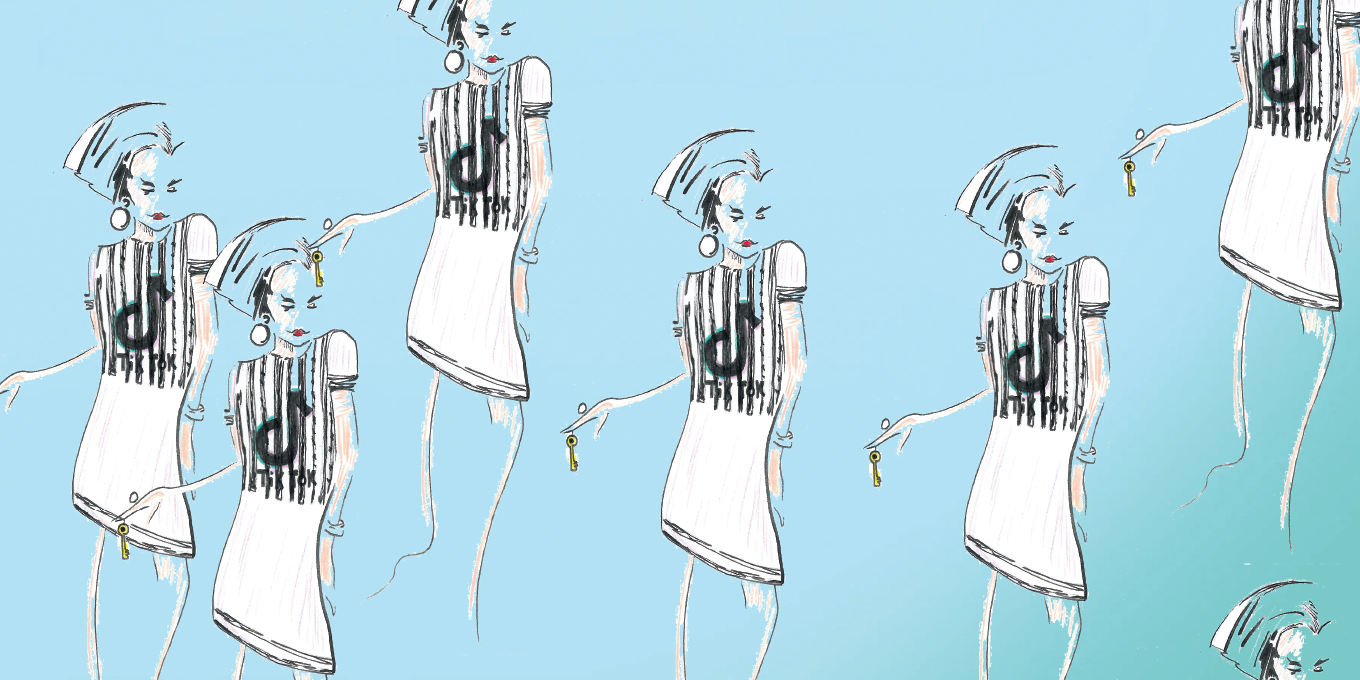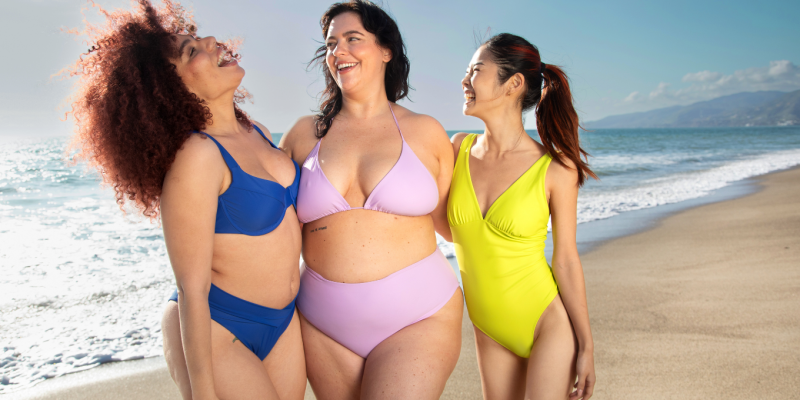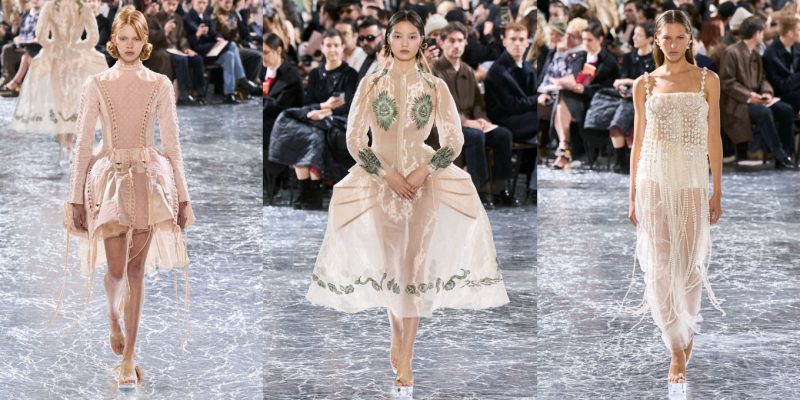Fashion
Is Everyone a Fashion Critic?
In the so-called democratized era of fashion criticism, whose voice matters?
by : Randi Bergman- Apr 27th, 2023

ILLUSTRATION, ROBB JAMIESON
If you’re on TikTok you’ll have noticed a constant refrain around the idea of gatekeeping. Countless videos dissect whether withholding information or access is a good thing or a bad thing. In some instances, like when protecting cultural rituals or techniques, gatekeeping can be seen as a valid form of preservation. In others, like when someone shares a favourite little-known vintage boutique or foundation shade, users willingly give up the goods in so-called protest of outmoded elitist attitudes, upholding the belief that everyone should have access to the good stuff. It’s unsurprising that users of the social-media platform—the most downloaded app for the past three years—should take such an approach since it is known for disseminating information to its billion-plus mostly gen-Z users. TikTok’s rapid ascension to educator of the masses reflects a wider democratization of knowledge. And when it comes to fashion, no longer is it only a small group of anointed authorities who share everything from history lessons to critiques in snackable video form.
Gatekeeping has long underpinned the fashion industry, with its unspoken hierarchies, cloistered fashion weeks and often impenetrable networks that radiate IYKYK (if you know, you know) energy. And ever since the blogger era forced the establishment to embrace outsiders more than a decade ago, the road has not been entirely smooth. Who could forget Dolce & Gabbana placing bloggers Tommy Ton, Bryanboy, Garance Doré and The Sartorialist’s Scott Schuman in its spring/summer 2010 front row, pitting them against fashion editors, retail buyers and other industry heavy hitters as authority figures worthy of attention. That uncomfortable power struggle has continued through the Instagram-influencer era and into today’s TikTok takeover.
“You don’t have to be a fashion historian to have authority on what is a good fashion show,” says Amy Odell, a fashion journalist who recently wrote a biography on Anna Wintour, gatekeeping’s unofficial figurehead. “I think it’s okay to say that successful fashion brands tap into visceral desires we have as human beings, and that’s something that is possible for a whole lot of people to assess.”
Fashion TikTok is filled with opinionated users who weigh in on everything from fashion shows to red-carpet appearances to advertising campaigns. “I always wanted to do fashion critiques, but I never thought people would want to hear what I had to say,” says Taylor Wang (@taylorwjc), a Toronto-based TikToker who is known for unfiltered fashion reviews and personal-style videos. A fashion enthusiast with a business-school background, Wang gives his POV freely—something that others who are more connected in the industry are unable to do. “Everyone is so afraid that they won’t get invited to the [next] show, so they just recap the show rather than critiquing it,” he says. Wang is not concerned about access—or paycheques. The brands that fund his and many other TikTokers’ content are unaffiliated tech start-ups like Afterpay and Klarna. “It would be nice to get invited to the shows, but the thing is I just want to share my thoughts,” he adds. “If I don’t talk online, I will call my friends and talk about the show. I think that’s why it works—because it’s natural.” (When asked if he’d ever pan a brand that was courting him, he says, “I would be less harsh, but if it were bad, I’d still say it was bad.”)
For the uninitiated (intentionally or otherwise), it can be easy to minimize the importance of creators on the app. “I didn’t deem myself an authority figure—I feel like my audience did,” says Mandy Lee (@oldloserinbrooklyn on TikTok), a trend forecaster who has become well known for her incisive predictions on the app. “[Media] still refer to me as a ‘TikTok fashion critic,’ and it’s always felt a little invalidating because I’ve been doing this work for seven years, and while I do share my work on TikTok, it’s also my [actual] job.” Lee is often regarded as a kind of oracle for her ability to predict big trends like the indie-sleaze revival of 2000s alt culture. Her success has brought attention to the trend-forecasting industry, something that was also gatekept for years by the brands that used its services—the arrival of, say, zebra on multiple runways was once treated as the revelatory genius of designers or editors. Today, Lee’s predictions reveal the much more anthropological nature of trends. “There is a science to trend forecasting—it’s not just scrolling on Pinterest,” she says.
Distinctive content has proven the most resonant with TikTok users. And in a sea of self-professed critics, Wang and Lee stand out for their well-thought-out opinions. “I think the only way to build true authority is to have your own point of view, and that’s what’s not understood as much,” says Lee. “You can’t just try to replicate somebody’s point of view—you have to develop your own.” This leads one to believe that the app will eventually shed its leagues of contenders and land on its own group of authority figures who will propel fashion criticism and analysis into the future. Odell suggests that traditional criticism might one day die out in favour of its video equivalent. “Why would you read a review of a [runway] show when you could go on TikTok and get a really good analysis and see it at the same time?” she asks. With that view, perhaps fashion will always have gatekeepers. And maybe they will be necessary for quality control. “I think some things should be gatekept, to be honest with you,” she says. “I’m not going to share how I research for my job. Is that gatekeeping?”
Read more:
Optical Illusions Are Fashion’s Latest Trend
These Fashion Brands Are Sustainable and Chic
Say Howdy to Cowboy Boots, the Newest Celebrity-Endorsed Trend
Newsletter
Join our mailing list for the latest and biggest in fashion trends, beauty, culture and celebrity.
Read Next

Beauty
Dr. Idriss Skincare Is Finally Available in Canada
We chatted with the internet's favourite derm about her routine, overrated (and underrated!) skincare advice and why butt paste is her secret cure for inflamed skin.
by : Melissa Fejtek- Apr 24th, 2024

Beauty
Summer Prep: How to Feel Confident in Your Swimsuit
New Size-Inclusive Swimwear: Gillette Venus partners with The Saltwater Collective to Launch a Collection for Any Body
by : ELLE Canada- Apr 24th, 2024

Culture
This University Elevates Women to New Professional Heights
You shouldn’t have to pause your life to move forward in your career.
by : ELLE Canada- Apr 16th, 2024




